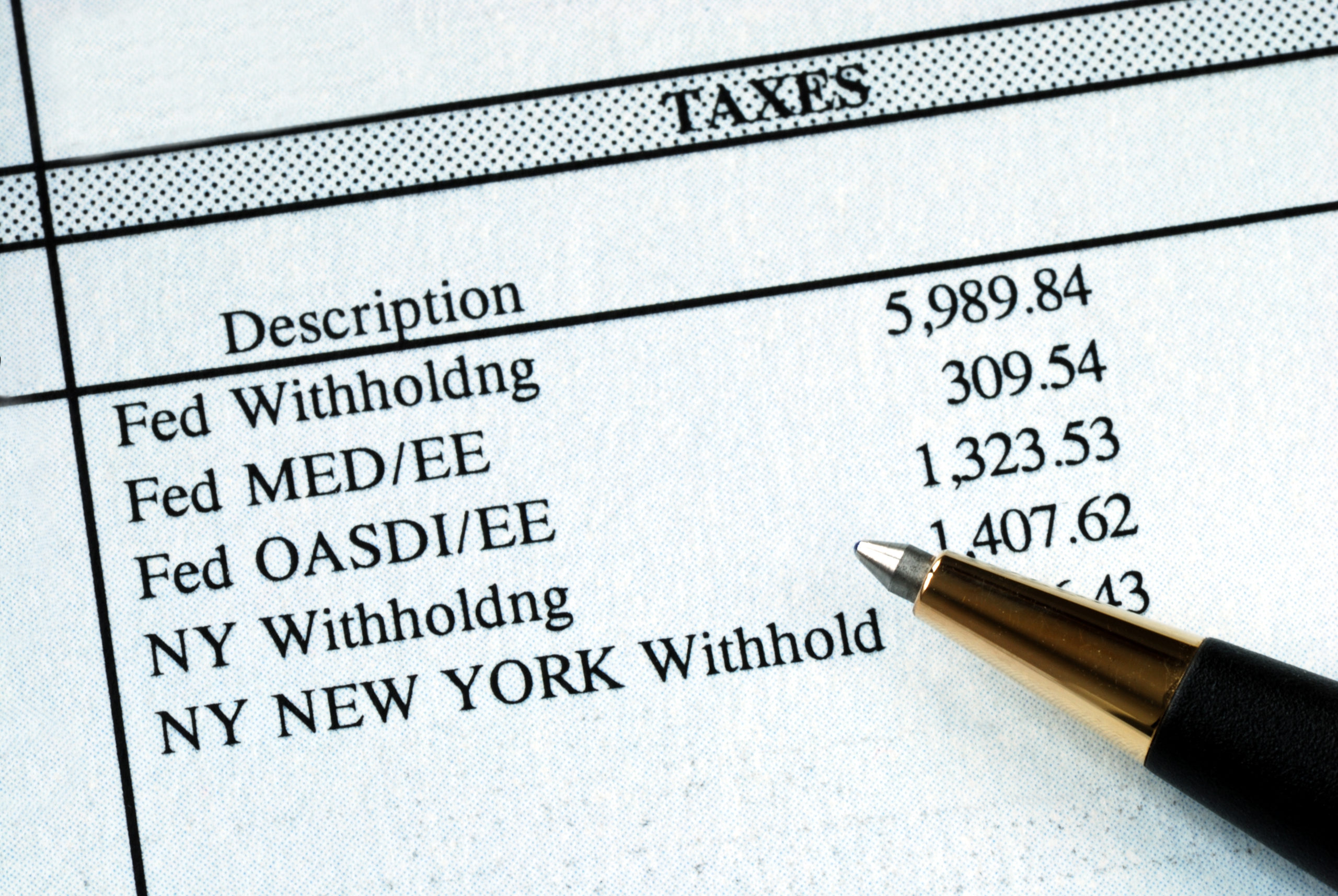
Unfiled taxes can create concern and confusion for many people. You might think that once enough time passes, the IRS will simply move on, but that is not always true. If you have not filed tax returns in previous years, it may help to learn what the IRS can do and how you should respond.
If you find yourself uncertain about how to tackle multiple years of unfiled taxes, consider speaking with our New York tax attorneys at Thorgood Law Firm. The sooner you address the issue, the more control you can have over the outcome. Reach out to us today for a free consultation and find out how we can help.
Why Does the IRS Have No Time Limit on Unfiled Returns?
When you do not file a tax return, the clock does not start ticking on the usual statute of limitations. For a filed return, the IRS has a set period in which it can assess extra tax or begin a tax audit. However, if no return is filed, the IRS can technically go back forever. In other words, they do not lose their ability to bill you or assess penalties just because several years have passed. This is why ignoring unfiled returns can be risky, as the problem does not disappear on its own.
Even though the IRS has no official time limit on unfiled returns, the agency does not always chase every missed year. While it has the power to look back indefinitely, it often focuses on a smaller span. Still, it is important to understand that the IRS has the legal right to act on any year you have skipped. Knowing this should encourage you to address unfiled returns as soon as possible before the IRS decides to make the first move.
Is There a Practical Timeframe the IRS Usually Follows?
While the IRS could go back decades, it typically focuses on the most recent six years of unfiled returns. This has become an accepted guideline in many cases.
If you have skipped filing for a long stretch, the agency often aims to bring you into compliance by having you file these last six years. Once you submit these returns, the IRS may consider you current. This practice can benefit both sides, as filing everything dating back decades can be complicated for the taxpayer, and the IRS usually wants the quickest route to bring accounts up to date.
If you have less than six years of unfiled taxes, do not assume you are free from further questions. The IRS has the final say, and if it sees signs of major or intentional noncompliance, it may ask you to file older returns. Still, many people who come forward and attempt to fix their problems discover that six years is enough to satisfy the IRS.
If you are not sure how many returns you need to file or which records you need, our New York tax attorneys can help you figure out the best way to handle your situation. Each case is different, so it helps to have someone by your side who knows how the IRS thinks.
How Do Refund Limitations Affect Unfiled Returns?
Some people do not file a return because they think they will owe money. Others might actually be owed a refund but fail to submit their returns on time.
If you do not file a return, you cannot collect any refund the IRS might owe you. After three years from the original due date, you lose the chance to claim that refund for good. This rule can also apply to certain credits, such as the Earned Income Tax Credit.
It can feel like a missed opportunity if you later learn you had no tax due or even had a refund but failed to file on time. Our New York tax attorneys can check if there is any way to recover a lost refund. In most cases, once that three-year window closes, there is no going back. This can be a strong reason to stay on top of your filings, even if you think you will not owe anything. Filing on time makes sure you do not lose money that was rightfully yours.
What Are the Consequences of Not Filing at All?
Not filing your tax return by the due date can lead to a Failure to File penalty, interest on any unpaid balance, and other actions by the IRS. The penalty is calculated as a percentage of the taxes you fail to pay on time, and it grows with each month (or part of a month) you remain unfiled. The rate is generally 5% of the unpaid tax per month, up to a maximum of 25%. If your return is over 60 days late, the IRS charges a minimum penalty that varies by year or 100% of the tax due, whichever is less.
If you receive a notice or letter from the IRS stating that you owe this penalty, it outlines the months you were late, the calculation of your unpaid tax, and the total penalty assessed. The notice will also explain your right to dispute the penalty and how to present evidence if you believe there was a reasonable cause for not filing. If you acted in good faith and can show you could not meet your tax obligations for valid reasons, you might qualify for penalty relief or a reduction in the assessed amount.
In addition to the penalty, the IRS charges interest on what you owe until the balance is fully paid. Over time, the combination of late filing penalties and interest can create a much larger bill than you would have faced if you had filed on time. If the IRS files a substitute return for you, it often leaves out many deductions and credits, resulting in a higher assessed tax. You may file your own return to challenge that substitute, but the longer you wait, the more the balance can grow.
Another consequence is losing refunds you might otherwise claim. If you qualify for a refund or credits, you generally must file within three years of the original due date to receive that money. Missing this window means you forfeit any funds or credits owed to you for that year.
The simplest way to avoid these penalties and interest is to file on time, even if you cannot pay right away. If you need extra time, you can request a filing extension before the due date. If you owe taxes but cannot afford to pay in full, you can ask the IRS about a payment plan. Addressing the problem early, rather than waiting for an IRS notice, usually leads to better outcomes and can help keep your overall debt more manageable.
What is the 10-Year Collection Window (CSED)?
Once the IRS has made an official assessment of what you owe, it generally has 10 years from that date to collect the tax, along with any penalties and interest. This timeframe is called the Collection Statute Expiration Date (CSED).
Multiple Assessments, Multiple CSEDs
Your account can include more than one assessed balance, each with its own 10-year period. These assessments may come from your original filed return, an amended return, a substitute return the IRS files on your behalf, or any additional tax identified in an audit.
Events That Can Extend the 10 Years
The IRS can sometimes suspend or extend the 10-year window. Filing for bankruptcy, requesting an offer in compromise, appealing an IRS decision, or serving in a combat zone are a few examples of situations in which the collection period can be paused or lengthened.
Why the CSED Matters
Many people mix up the “no time limit for unfiled returns” with the “10 years to collect.” If you never file, the IRS can look back whenever it wants. But once it files a substitute return or you submit a late return and the IRS officially assesses the tax, the 10-year clock starts. After that time runs out, the IRS typically cannot enforce collection for that specific assessed balance unless a pause or extension applies.
If you are unsure about your collection deadlines, you can request an account transcript from the IRS or review notices the IRS sends. These documents often show when an assessment took place and which actions, if any, have paused or extended the collection timeframe.
How Do You Start Fixing Multiple Years of Unfiled Returns?
Start by gathering all your old tax documents. These might be W-2 forms from employers, 1099 forms from contract work or interest, and any other records of income. If you do not have these documents, you can request transcripts from the IRS or contact your old employers. Once you have the needed information, you can prepare each year’s return. Although this might feel like a big job, it is less stressful than waiting for the IRS to contact you.
After you file, check to see if you owe money. If you do, speak to the IRS about payment arrangements. If you can pay in full, that can simplify things. If not, the IRS may set up a payment plan so you can pay over time. The key is to show that you are willing to cooperate. If you are confused about how to arrange these steps, our New York tax attorneys at Thorgood Law Firm can guide you. Having a lawyer on your side can ease your concerns and help you stay organized.
Are There Criminal Charges for Not Filing Tax Returns
In rare cases, under the 26 U.S.C. Section 7203, the IRS can prosecute a taxpayer for willfully failing to file the tax returns. Penalties under this section may be up to a year in prison and a $25,000 fine. criminally charge. If the IRS believes that the non-filing is an active effort to avoid paying taxes, the IRS, under 26 U.S.C. Section 7201 may prosecute, with significantly harsher penalties – up to five years in prison.
When Should You Seek Help From Our New York Tax Attorneys?
If you have more than one year of unfiled taxes or if you owe a large sum, seeking legal counsel can be wise. Some people try to handle unfiled taxes on their own, but difficult issues often arise.
If you are not sure how many years you must file, if you cannot find all your records, or if you have been contacted by the IRS, it is time to talk to our New York tax attorneys at Thorgood Law Firm. With years of experience, we can explain your rights, help you file past returns, and potentially arrange deals with the IRS to lessen the pressure on you.
Our offices are located at 100 Park Avenue, 16th Floor, New York, NY 10017. We invite you to contact us today for any tax-related legal concerns. Our New York tax attorneys are dedicated to guiding you through the process of filing old returns and dealing with any tax disputes that arise. We handle each case with care so you can find relief from tax worries and focus on moving forward.






